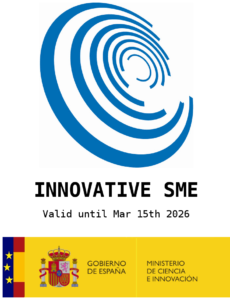Assays
Nucleic acid systems
Evaluate different biomolecular interactions:
- DNA and RNA hybridization studies: detection of mismatches in hybridization, detection of very low quantities in samples.
- Nucleic acids (e.g. aptamers) interacting with larger molecular systems (protein complexes).
Lipid systems
Real-time monitoring of:
- Formation of supported lipid membranes.
- Interactions with binding proteins, DNA, peptides or polymers with lipid membranes.
- Degradation of lipid films.
Real-time monitoring of electrochemical studies of deposition and dissolution of metallic layers onto the gold electrode of the sensor.
Application note: “Cobalt deposition and dissolution”.
Real-time monitoring of adsorption of surfactants on different surfaces:
- Characterization of adsorption kinetics, layer thickness and morphology of the adsorbed film (e.g. in tribology studies).
- Study the removal of lipids (stain removal).
Protein and Immunological systems
Label-free and real-time evaluation of:
- Protein-protein interactions: protein-protein affinity, protein aggregation, antibody-antigen (immunosensor).
- Protein interactions with membranes and other surfaces: protein adsorption on surfaces, enzymatic activity (degradation of substrate films).
- Protein conformational changes.
Application note: “Detection of carbaryl pesticide”
Real-time study of:
- Formation and characterization of complex (bio)polymeric films: quantification of film thickness, viscoelasticity, or ion/solute transport properties. For instance, it can be applied to describe the course of electropolymerization of a thin film and monitor layer-by-layer assembly of polymers.
- Characterization of nanoparticles adsoption-desorption onto precursor films: kinetics and layer thickness.
Real-time monitoring of changes in mass and structural properties:
- Cell attachment and spreading onto functionalized sensor surfaces and morphological changes (e.g. alteration cytoskeleton as target in drug screening), and cell detachment from sensor surface as an indicator of cell death.
- Study of cell interaction with the surface of medical devices and biomaterials (study of biocompatibility).
Scientific and industrial fields
Biomolecular Sciences research
Enabling label-free, real-time characterization of:
- Immunoreagent cross-coupling.
- Kinetic study of biochemical interactions, including specificity, affinity and conformational change.
Environmental monitoring
Applied to monitoring:
- Detection of environmental pollutants (pesticides).
- Toxicity evaluation and ecotoxicity (biofilm formation).
- Uptake and deposition rates of nanoparticles or other contaminants as well as particles used in environmental remediation.
Application note: “Detection of Pesticides”.
Cleaning products
Real-time monitoring of surfactants, enzymes and more complex detergent formulations by:
- Studying its interaction with surfaces.
- Quantifying the rate of the cleaning process and stain removal.
- Cleaning under different physicochemical conditions (T, pH…), etc.
Pharmaceutical industry
Real-time and label-free studies of specific binding, interactions and comformational changes:
- Detection of potential new drug candidates in screening assays (drug discovery): screening of compound interactions with cells and protein drug targets.
- Characterization of protein stability (as an indicator of short- and long-term stability of drug in commercial platform): test adsorption and aggregation propensity therapeutic monoclonal antibodies and proteins, viscosity, and effect of surfactants, protein concentration, storage conditions, etc.
Clinical diagnosis
Provides rapid and accurate diagnosis:
- Detection and quantification of molecular biomarkers for cancer analysis (e.g., PSA in prostate cancer), or in bacterial or viral infections (tuberculosis).
Application note: “Detection of Tuberculosis”.
Biomaterials and medical implants
Evaluation of biocompatibility of biomaterials:
- Study of formation and structural properties of biopolymeric films.
- Compatibility with plasma proteins (protein adsoption) and cells (cell attachment).
- Biomineralization and corrosion assays (estimation of lifespan).
Energy
Real-time monitoring of processes of applications in different fields, from renewable energy to fossil fuel energy:
- Hydrolysis of cellulose (biofuels).
- Electrodeposition and corrosion processes (fuel cells).
- Electro-active bacterial attachment and deposition (microbial fuel cells).
- Dye uptake on mesoporous films (solar cells).
- Asphaltene fouling (petroleum).
Quick detection and identification of contaminants throughout the food manufacturing process:
- Food safety: detection of xenobiotics, toxins, pathogens.
- Food quality assessment: composition, shelf life.

